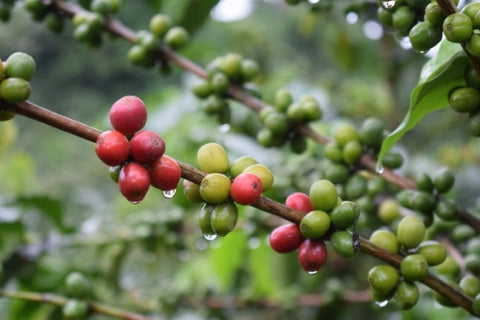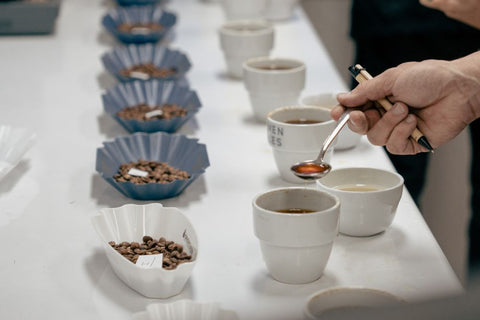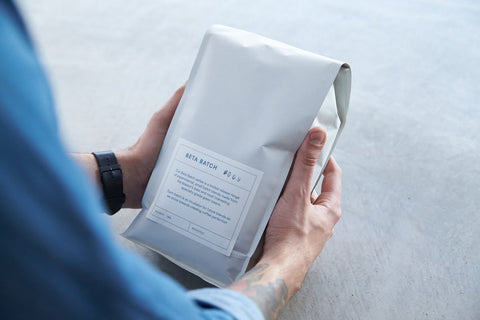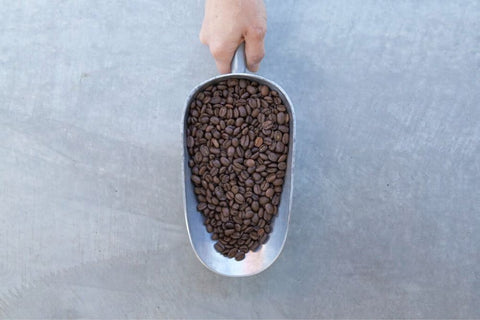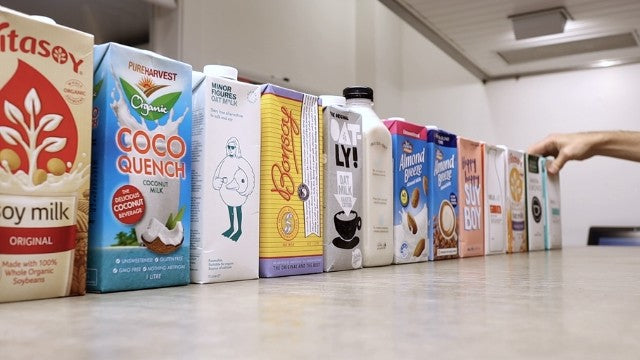In this study, our Coffee Next team test 14 different brands of Almond, Soy, Oat & Coconut milk to find out which is best with coffee. While we couldn’t hope to test every brand available, we picked some of the most popular milk alternatives in Australia to provide some overall recommendations
The rise of milk alternatives
This study is a subset of our Cafe 2025 report, which is focused on market trends in cafes and coffee shops.
One of the trends we found in this research is the rise of milk alternatives - which are predicted to increase by 7%. As customers continue to move away from dairy, these alternative milks will be increasingly important for cafés & coffee shops in the coming years.
How do we define ‘the Best’ Milk Alternative
The best is relatively subjective thing, particularly when it comes to taste. However, we tried to put objective criteria on testing these milks, including:- How much foam does the milk produce? We used the Ubermilk automatic steamer for our tests to keep the process consistent and heated each sample to 65C.
- Does it curdle in coffee? We measured the pH of both the coffee (our Cultivar Blend, which has a pH of 4.56) and each milk variety to see if there was a correlation here
- Does the taste profile compliment the coffee?
While we tested a range of brands and milks, not all the brands tested are universally available. So, if you’re outside of Australia, you are going to have to test local brands to determine which one is right for you.
Almond Milk
 We start with almond milk because it is now the most popular alternative milk in cafes - and is still growing in popularity. We tested five popular brands of almond milk. Note the differences in protein content and pH below.
We start with almond milk because it is now the most popular alternative milk in cafes - and is still growing in popularity. We tested five popular brands of almond milk. Note the differences in protein content and pH below.
| Almond (%) | Protein (g/100ml) | pH | |
|---|---|---|---|
| Almond breeze Unsweetened | 2.5 | 0.5 | 7.66 |
| Almond Breeze Barista | 2.5 | 0.6 | 7.56 |
| Milklab | 3.5 | 0.8 | 7.48 |
| Australia's Own Barista | 3.5 | 1 | 7.54 |
| Insideout Unsweetened | 11 | 1.5 | 6.86 |
Unsweetened Almond Milks
Both unsweetened almond milk varieties exhibited two extreme behaviours.
The Inside Out variety curdled just by heating it to 65 degrees Celsius (the standard milk temperature for coffee), while the Almond Breeze Unsweetened barely produced any foam at all.
When we compare the two unsweetened almond milks, we see that the pH of the variety that curdled on heating was quite low relative to the others.
It seems probable, then, that for almond milk an alkaline pH is preferred (i.e. pH>7). The Almond Breeze unsweetened milk, which didn’t produce much foam, also had a slightly lower protein content, which may account for the inability of the milk to create a stable air-foam inside the milk.
Ultimately, our testers agreed that unsweetened almond milk just didn't taste good with coffee.
The flavour tended to be watery and create a relatively insipid coffee. The texture was relatively chalky in the mouth and generally felt quite clumpy.
Sweetened Almond Milks
The sweetened varieties performed a lot better.
Each variety we tested retained its structure at high temperature, poured well and didn’t curdle in contact with coffee.
All 3 varieties had a great nutty flavour - clearly the additional sugar inside the almond milk actually has a significant impact on both the taste and the stability of the mixture in coffee.
Overall, there was one brand that we preferred. We found Australia's own almond milk blend to have a superior taste when combined with coffee. Having said that, the other brands of sweetened almond milk we tested were also perfectly acceptable.
Soy Milk
 Soy milk is the second most popular milk alternative, accounting for about 15% of total non-dairy milk sales (in coffee).
Soy milk is the second most popular milk alternative, accounting for about 15% of total non-dairy milk sales (in coffee).
While Soy milks popularity is waning, many consumers still like it. The physically measured parameters for each soy milk variety are shown below.
| Protein (g/100ml) | pH | |
|---|---|---|
| Happy Happy Soy Boy | 3.9 | 8.10 |
| Vitasoy Original | 3.3 | 6.81 |
| Bonsoy | 4.1 | 6.91 |
We found that all 3 soy milk varieties curdled when poured into coffee.
However, we found that curdling can be a transient effect (i.e. one that takes time to come to equilibrium), for example Happy Happy Soy Boy was the most stable upon fresh pouring, and gradually began to separate over time.
Similar to almond milk, it seemed that the more acidic milk varieties were more likely to curdle with coffee.
When we combine this information with the fact that some milks took time to curdle, it may well be that the mixed solution pH (i.e. the pH 4.56 coffee combined with pH 8.1 (soy boy, for example) may determine the rate of curdling.
It’s likely that a less acidic coffee (a darker roast coffee, typically), the more likely soy milk will be stable. We conducted a second experiment with this with in mind.
Drinking Chocolate (used to make hot chocolate) has a neutral pH. Interestingly, we found that none of the soy milk varieties curdled when used in a hot chocolate.
So, soy milk is heat stable, but not pH stable.
In terms of taste: We did some ad-hoc consumer tests through our espresso window, and found some interesting contradicting findings with our own taste tests – namely that consumers who chose to drink soy coffees tended to like the ‘beany’ taste of Bonsoy, over our chosen milk, Happy Happy Soy Boy.
So, when it comes to taste, we say let your customers taste buds decide.
Oat Milk
 We're quite excited about Oat milk as a category, as we believe it is the closest approximation to the taste of dairy milk, at least when mixed with coffee.
We're quite excited about Oat milk as a category, as we believe it is the closest approximation to the taste of dairy milk, at least when mixed with coffee.
It's exciting one to watch because it's also the fastest growing category of alternative milk product.
Note the testing parameters below.
| Protein (g/100ml) | pH | |
|---|---|---|
| Oatly | 1 | 7.47 |
| Minor Figures | 0.2 | 7.38 |
| Vitasoy Unsweetened | 0.2 | 6.17 |
At the time of this review, they were only three brands that we could actually get our hands on. And we found that all three varieties performed well with coffee.
All varieties were stable to both temperature & in coffee (despite a wide range of pH values) and they all had an acceptable taste with coffee.
Choosing one brand here was a close call, but Oatly slightly nudged out the competition.
In truth, we would be happy to recommend all of the brands tested.
That said, many companies are now producing Oat Milks, and I’m sure will be new ones available to you in the near future.
In terms of an interesting scientific finding on oat milk: We observed that while the protein content, the pH, the stabilising buffers and the sugar content all closely mirrored the other types of alternative milk, the Oat milks didn’t curdle.
One reason why this might be the case is because the proteins in oat milk are quite different to those produced from, say, almond milk.
Coconut Milk
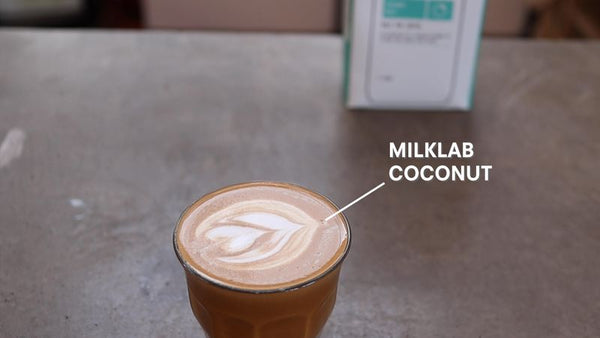 The final milk we tested was coconut. It’s not as popular as the other milk alternatives we tested - It was just something that was quite different. That, and I like coconut.
The final milk we tested was coconut. It’s not as popular as the other milk alternatives we tested - It was just something that was quite different. That, and I like coconut.
| Protein (g/100ml) | pH | |
|---|---|---|
| Pureharvest cocoquench | 0.5 | 6.26 |
| Milklab coconut | 0.6 | 6.49 |
| Vitasoy coconut unsweetened | 0.2 | 6.73 |
Interestingly, the 3 coconut milk varieties we tested were quite stable at temperature and none of them curdled in milk. So that's two points in their favour.
However, there was quite a big variation in taste when we added the coconut milks to coffee.
Some were overly watery and relatively insipid. The Milklab Coconut Milk was quite creamy and tasty, but (perhaps negatively) tasted very much like coconut.
I guess this shouldn’t come as a surprise, but then, one of them didn’t… So there you go.
So, if you like coconut milk, and if customers are demanding it, then I recommend the Milk Lab variety.
For other brands in your area, be careful that you don't get one that tastes watery when it's mixed with coffee.
Overall Recommendations
Overall, I would recommend Oat milk, due to its relatively neutral taste in coffee and its stability to heat and pH.
Almond milk is our 2nd choice, you can get some really good taste from certain brands of almond milk - Just be sure that it’s a sweetened almond milk.
Why do some milk alternatives curdle?
As we’re going to compare the stability of each milk against curdling, it important to know what milk is, what keeps it stable, and what things my cause that stability to break down.
Milk, both dairy and non-dairy, is essentially fat that has been stabilised in water.
This stabilisation occurs due to the formation of micelle structures with the proteins, sugars and their interaction with the water and fat.
For the non-scientists, these ‘structures’ are the reason that milk stays creamy and doesn’t separate into layers of water and oil.
With some varieties, this is a delicate balance and several things can break this stabilised emulsion. These include heat, pH (acidity or alkalinity), and other chemical reactions. You can see, then how mixing milk, generally mildly alkaline, might be sensitive to being added to coffee!
Once this stabilisations is broken, the structure of the ‘micelle structures’ is compromised, and clumps form. This is commonly known as curdling.
While curds are delicious for some things, at Seven Miles, we’re not particularly fond of them forming in our coffee.



